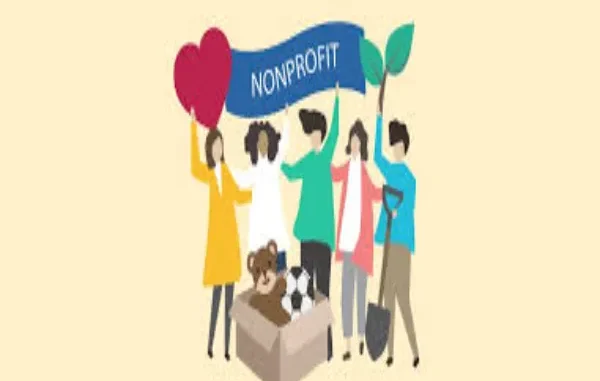

Operating a nonprofit presents unique challenges, and one underappreciated category is printing. Whether you’re writing a donor appeal or an event program, printed communication is still an essential piece of your messaging and fundraising efforts.
The trick is in balancing cost and quality with impact. Without a careful print plan in place, your company could wind up wasting more money and time than you intended. For printing, optimization means designing materials that reflect your mission while still being affordable.
Printing may seem like a small thing, but when done right, it’s actively helping outreach, fundraising, and community engagement. Here are five strategies to ensure that your printing process is working to meet your nonprofit’s needs.
1. Get to Know Your Nonprofit Printing Basics
Before you begin talking about paper choices or design, start by developing a game plan for your nonprofit’s printing needs. Are you doing donor thank you letters monthly? Are you doing more seasonal fundraising?
Knowing the volume, frequency, and purpose of each project helps you plan efficiently. Printing for nonprofits often means finding the balance between affordability and maintaining a professional appearance.
Small changes, such as choosing a better print size or dropping color usage whenever it’s not necessary, allow you to keep the costs down without compromising quality. Planning out what you need prevents panic buying and overspending.
It also provides better control over scheduling, ensuring your materials get to supporters on time. By mastering these fundamentals, you build the groundwork for all of your future projects.

2. Choose Materials that Fit the Mission
The paper and finishes you pick communicate a great deal about your nonprofit. For instance, recyclable paper suits companies with an emphasis on sustainability, whereas nice, clean matte paper fits annual reports.
When your materials mirror your mission, this consistency creates a connection between the message and the medium. Cost matters here, too. You don’t always need superior quality finishes, especially for bulk mail.
Save the higher-quality options for pieces that require it, like invites or donor packets. That sort of prioritization is how you squeeze more out of your budget while still making an impact. By investing the time to match the paper quality and finish to the purpose, you avoid waste, and may also impact how your audience perceives materials from your organization.
3. Plan Designs with Purpose
Design is not just decoration—it dictates how people use your printed material. Clean layout, easy-to-read fonts, and the consistent use of color all help your message to be digestible.
When designing, consider the action you want the reader to take. Do you want them to donate, attend an event, or help spread the word? Keep that call to action obvious.
It’s a good idea for nonprofits with a variety of campaigns to develop templates. Templates are time savers, and they also ensure every component follows a particular style. They also decrease errors when spinning up new projects.
Good design also considers accessibility. Use a readable font with a clear layout. This, in turn, makes your content more accessible for supporters of all ages. Purposeful, consistent design in your materials develops trust and familiarity, helping you build a strong community support for your nonprofit.

4. Focus on Efficient Printing Processes
Even the greatest design and materials are of no value if the printing is ineffective. Begin by knowing how much you need. If you order too much, you waste, and if you order too little, you end up paying for a second print run. By tracking previous print runs, you can make more accurate predictions.
Timing is equally important. Schedule your postcard printing based on events, initiatives, and deadlines. A hurried job usually costs more and brings mistakes. You take the stress out of the equation and set yourself up for a job well done.
Also, package like projects together. Running newsletters, flyers, and letters through the printer simultaneously can reduce costs. With good planning, you save money and can direct more of your budget to your mission, not to unnecessary printing costs.
5. Match Publishing to How You Are Reaching Out
Printing isn’t just about making material— it’s about how those materials support your broader outreach. For example, mailers work better in tandem with digital buys. A well-crafted postcard can direct donors to a landing page, and printed event invitations can help remind supporters of the email date.
Think about your audience. Not all requests for support will resonate in the same way with donors, volunteers, or people in the community. When print is tailored to an individual group, it also increases impact. For instance, your long-term donors may like detailed reports, while new supporters prefer flashy, fast-flying brochures.
If print supports your outreach, you can say more with every piece. It’s no longer just paper and ink—instead, it becomes an instrument to build relationships and inspire action. This way, your printing works for your nonprofit’s future success.

Final Thoughts
Optimizing your printing isn’t about spending more money; it’s about making smarter choices. Your nonprofit gains control over its communication by choosing the right materials, planning effective designs, streamlining processes, and aligning print with outreach strategies.
Clear, consistent printed materials make an impression, improve efficiency, and engage with supporters. Every little thing, from the quality of paper to how many copies you order, has an impact on how the message is delivered.
When handled strategically, printing for nonprofits becomes a valuable asset in realizing your mission and building a community that shares your vision. Instead of being an afterthought, it becomes a tool that drives your nonprofit’s goals forward with clarity and purpose.






Leave a Reply